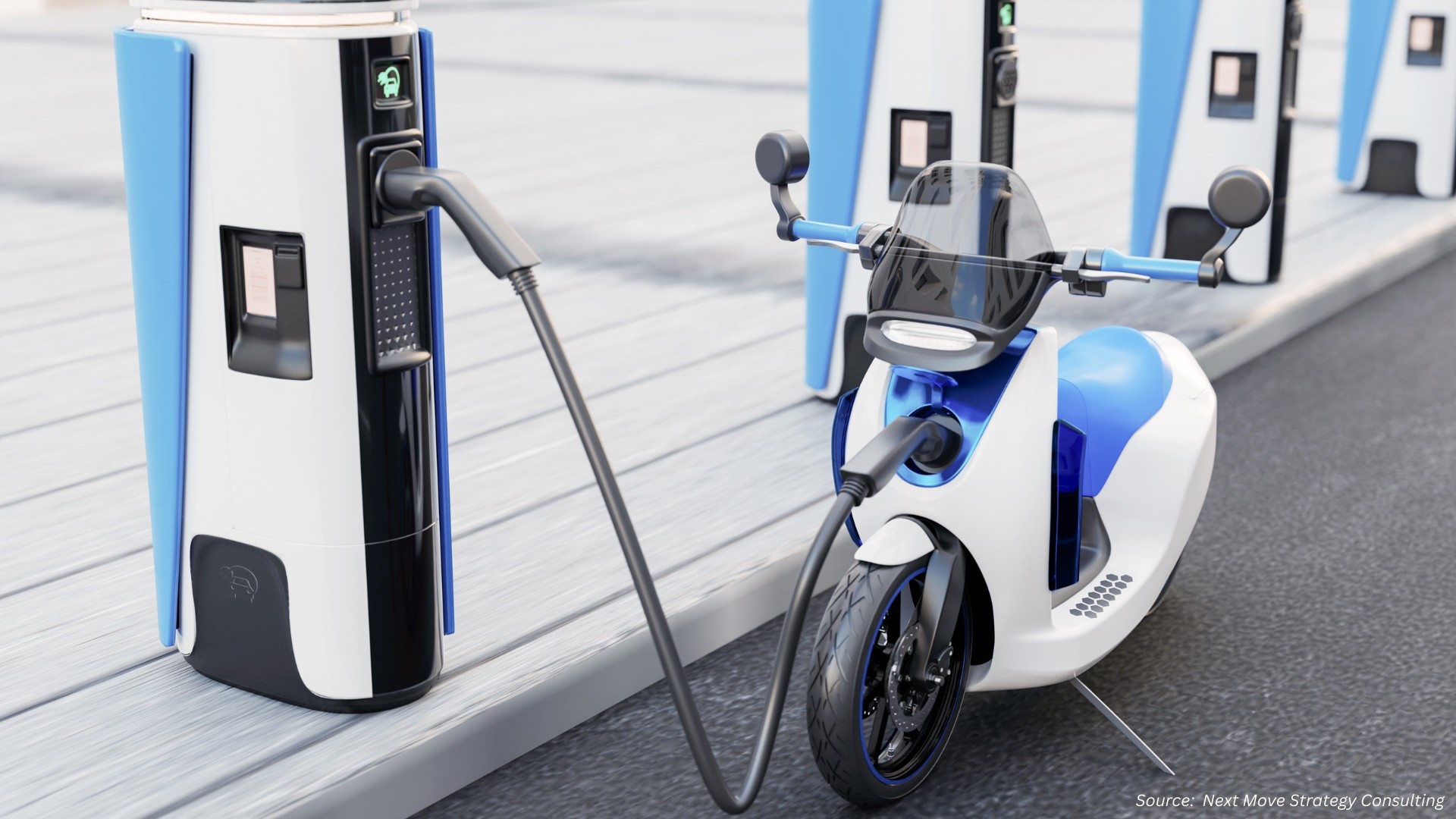
South Korea ATV and UTV Market by Vehicle Type (All-Terrain Vehicles, and UTVs / SxS), by Propulsion Type (Internal-Combustion Engine, and Electrified), by Power Output (Low, Medium, and High), by Drivetrain (2-Wheel Drive, and 4-Wheel Drive), by Autonomy Level (Conventional, and Others), by Primary Application (Recreation & Tourism, and Others), by End-User Segment (Individual Consumers, and Others), by Price Tier (Economy, and Others) – Opportunity Analysis and Industry Forecast, 2024–2030.
Industry: Automotive & Transportation | Publish Date: 20-Oct-2025 | No of Pages: 72 | No. of Tables: 67 | No. of Figures: 22 | Format: PDF | Report Code : AT787
Market Definition
South Korea ATV and UTV Market was valued at USD 716.16 million in 2023, and is predicted to reach USD 1330.3 million by 2030, with a CAGR of 8.5% from 2024 to 2030.
All-Terrain Vehicle (ATV) is a motorized off-road vehicle designed for recreational and utility purposes. Its compact size, low-pressure tires, and handlebar steering characterize it. ATVs are designed to traverse various terrains, including dirt trails, mud, sand, and rocky surfaces. They have powerful engines and rugged suspension systems to provide excellent traction, maneuverability, and stability in challenging environments.
ATVs usually have a four-wheel drive system, allowing them to simultaneously deliver power to all wheels for enhanced off-road performance. ATVs are primarily used for recreational activities such as off-roading and trail riding; they are also utilized in various industries for utility purposes such as agriculture, forestry, search and rescue operations, and maintenance of remote areas.
Utility Task Vehicle (UTV) is a multipurpose off-road vehicle for work and recreation. UTVs are larger and more robust than traditional ATVs as they feature a cabin-like structure with side-by-side seating for two or more occupants, offering increased passenger capacity and cargo-carrying capabilities.
UTVs are renowned for their versatility and ruggedness. They have sturdy frames, powerful engines, and advanced suspension systems to handle demanding terrains and heavy loads. Some renowned brands that offer these kinds of UTVs in the market include Polaris Inc, Yamaha, Kawasaki, Arctic Cat, John Deere, Honda, Textron Off-Road, and others.
These vehicles are widely used in various industries and sectors, including agriculture, construction, landscaping, recreation, and public services. Their utility features include the ability to haul and tow heavy loads with ample cargo space for transporting equipment and materials.
Thus, both ATVs and UTVs are popular off-road vehicles with distinct characteristics. ATVs excel in agility, speed, and maneuverability for single riders, while UTVs prioritize passenger capacity, cargo versatility, and comfort for multi-passenger & utility applications.
Growing Popularity of Outdoor Adventure and Leisure Activities
In South Korea, the increasing inclination toward outdoor recreational activities—such as mountain trail exploration, camping, forest trekking, and rural eco-tourism—has significantly propelled the demand for All-Terrain Vehicles (ATVs) and Utility-Terrain Vehicles (UTVs). These vehicles are becoming essential tools for both adventure seekers and leisure travelers looking to explore South Korea’s diverse topography, which ranges from coastal sand dunes to hilly forest terrain. With an expanding number of outdoor clubs, ATV parks, and off-road rental services in provinces like Gangwon-do and Gyeongsangbuk-do, ATVs and UTVs are gaining traction as both recreational and lifestyle assets. Their ease of handling, compact structure, and ability to operate in off-grid conditions make them appealing to both amateur adventurers and seasoned off-roaders across the country.
Increasing Use in Agricultural and Utility Operations
The application of ATVs and UTVs in South Korea has expanded beyond recreation into agriculture, forestry, and utility sectors—particularly in the country’s rural and mountainous regions. Farmers, vineyard owners, and local maintenance crews increasingly rely on these vehicles for tasks such as crop monitoring, transportation of tools and feed, spraying, and navigating narrow pathways where traditional vehicles cannot operate. Their efficiency, maneuverability, and ability to carry moderate loads on uneven terrain offer considerable value to small- and mid-scale operations. In areas where labor shortages are a growing concern, the use of such utility vehicles is becoming a practical solution to maintain productivity and mobility.
Regulatory Constraints and Terrain Access Restrictions
Despite rising interest, the South Korean ATV and UTV market faces limitations due to strict land-use regulations and environmental protection policies. Many mountain trails, national parks, and natural heritage zones restrict or prohibit the use of motorized off-road vehicles to prevent soil degradation and protect biodiversity. Additionally, there are legal and insurance-related complexities around licensing, road use permissions, and registration of such vehicles. For instance, riders must often obtain special permits for off-road usage, and certain UTV models may not meet national safety standards for use outside private or industrial property. These regulatory hurdles limit both recreational and commercial adoption, especially in protected and high-traffic zones.
Integration of Smart Technology and Safety Features
South Korean consumers place high value on technology, safety, and user experience—and the ATV and UTV industry is tapping into this demand. Emerging models are incorporating advanced driver-assistance systems (ADAS), smart braking, remote diagnostics, real-time GPS tracking, and terrain-adaptive suspension systems. These tech-enabled features are increasingly appealing to safety-conscious users, especially families and beginners venturing into off-road recreation. Furthermore, connectivity with mobile apps and digital dashboards allows for route planning, vehicle health monitoring, and seamless integration with personal devices. Manufacturers that focus on smart, connected, and intuitive ATV/UTV platforms tailored to Korea’s digitally-savvy market are likely to gain a competitive edge.
Competitive Landscape
The South Korea ATV and UTV industry includes several market players suchDNA Motors (formerly Daelim Motor), Daedong Corporation (Kioti), Honda Motor Co., Ltd., BRP (Bombardier Recreational Products - Can-Am), Polaris Industries, Kubota Corporation, Kawasaki Heavy Industries Ltd., Suzuki Motor Corporation, John Deere, CFMOTO, KYMCO Group, Segway Powersports Korea, Daechang, and others.
Key Benefits
-
The South Korea ATV and UTV market report provides a quantitative analysis of the current market and estimations through 2024-2030 that assists in identifying the prevailing market opportunities to capitalize on.
-
The study comprises a deep dive analysis of the market trend including the current and future trends for depicting the prevalent investment pockets in the market.
-
The information related to key drivers, restraints, and opportunities and their impact on the market is provided in the report.
-
The competitive analysis of the market players along with their market share in the South Korea ATV and UTV market.
-
The SWOT analysis and Porter’s Five Forces model are elaborated in the study.
-
Value chain analysis in the market study provides a clear picture of the stakeholders’ roles.
South Korea ATV and UTV Market Key Segments
By Vehicle Type
-
All-Terrain Vehicles (ATVs)
-
Utility Task Vehicles / Side-by-Sides (UTVs / SxS)
By Propulsion Type
-
Internal-Combustion Engine (ICE)
-
2-Stroke Gasoline
-
4-Stroke Gasoline
-
Diesel
-
-
Electrified
-
Battery Electric Vehicle (BEV)
-
Hybrid Electric Vehicle (HEV)
-
Fuel-Cell Electric Vehicle (FCEV)
-
By Power Output
-
Low (<400 cc or <20 kW)
-
Medium (400–800 cc or 20–40 kW)
-
High (>800 cc or >40 kW)
By Drivetrain
-
2-Wheel Drive
-
4-Wheel Drive
By Autonomy Level
-
Conventional
-
Semi-Autonomous
-
Fully Autonomous
By Primary Application
-
Recreation & Tourism
-
Agriculture & Forestry
-
Construction & Industrial
-
Government, Law-Enforcement & Defense
-
Turf & Grounds Management
By End-User Segment
-
Individual Consumers
-
Commercial Enterprises
-
Government Agencies
-
Rental Fleets & Tour Operators
By Price Tier
-
Economy (<$10K)
-
Mid-Range ($10K–$20K)
-
Premium (>$20K)
Key Players
-
DNA Motors (formerly Daelim Motor)
-
Daedong Corporation (Kioti)
-
Honda Motor Co., Ltd.
-
BRP (Bombardier Recreational Products - Can-Am)
-
Polaris Industries
-
Kubota Corporation
-
Kawasaki Heavy Industries Ltd.
-
Suzuki Motor Corporation
-
John Deere
-
CFMOTO
-
KYMCO Group
-
Segway Powersports Korea
-
Daechang
Report Scope and Segmentation
|
Parameters |
Details |
|
Market Size in 2023 |
USD 716.16 Million |
|
Revenue Forecast in 2030 |
USD 1330.3 Million |
|
Growth Rate |
CAGR of 8.5% from 2024 to 2030 |
|
Analysis Period |
2023–2030 |
|
Base Year Considered |
2023 |
|
Forecast Period |
2024–2030 |
|
Market Size Estimation |
Million (USD) |
|
Growth Factors |
Growing Popularity Of Outdoor Adventure And Leisure Activities Increasing Use In Agricultural And Utility Operations |
|
Companies Profiled |
13 |
|
Market Share |
Available for 10 companies |
|
Customization Scope |
Free customization (equivalent up to 80 working hours of analysts) after purchase. Addition or alteration to country, regional, and segment scope. |
|
Pricing and Purchase Options |
Avail customized purchase options to meet your exact research needs. |

















 Speak to Our Analyst
Speak to Our Analyst

























